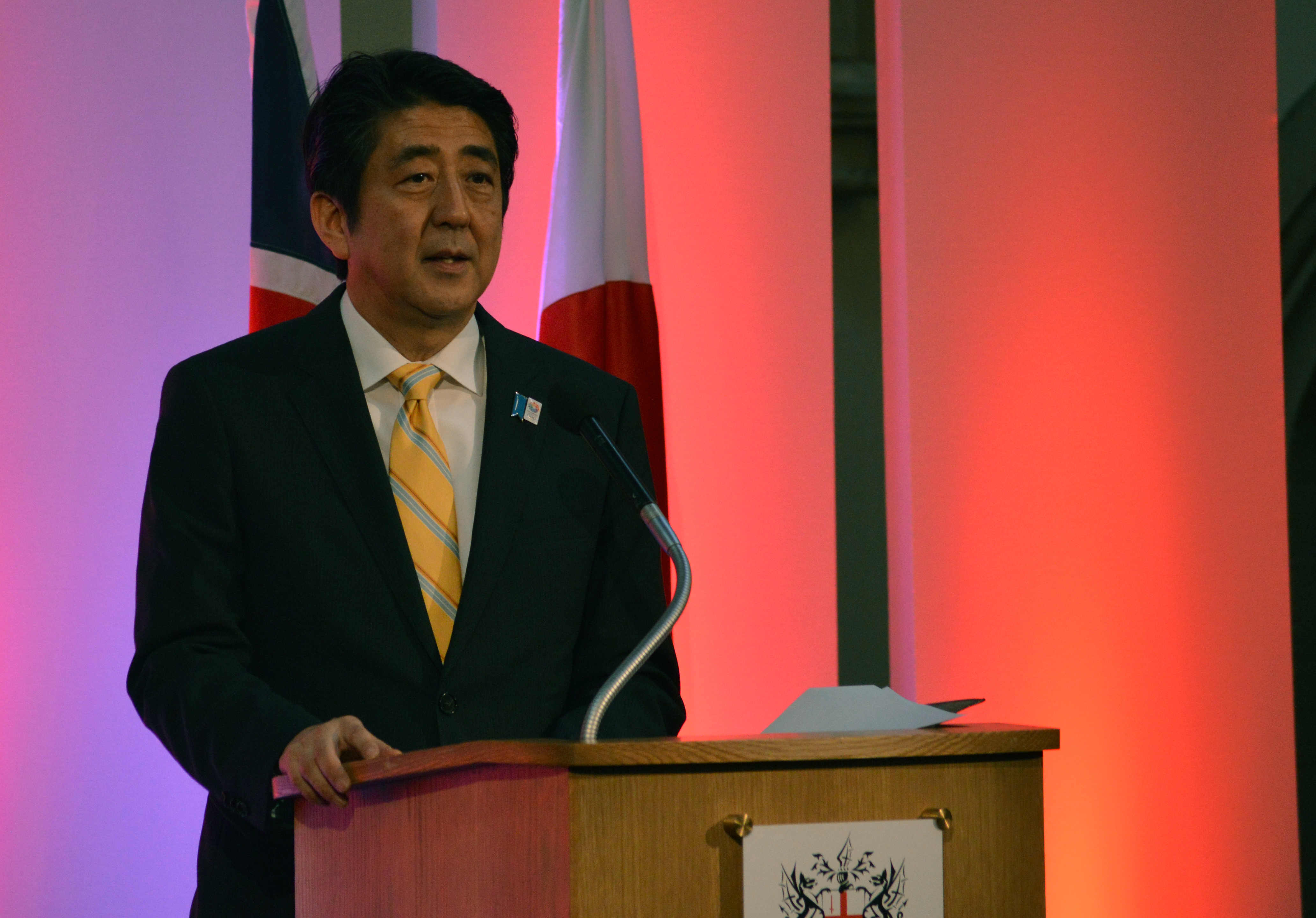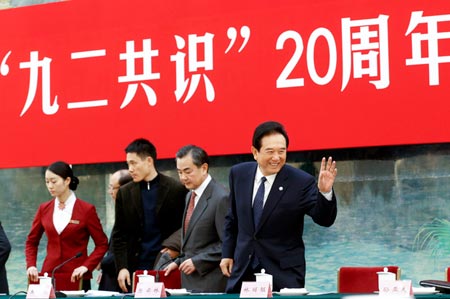by Garrett Dee
語言:
English
Photo Credit: Tsai Ing-Wen/Facebook
CURRENT ELECTORAL conditions being what they are, it is time to start looking ahead to the impact that the Tsai presidency will have upon Taiwan’s international relationships with nations in the Asia Pacific, as well as how her administration will figure into larger geopolitical trends. Under the leadership of Ma Ying-jeou’s KMT, Taiwanese foreign policy has been decidedly China-centric, an ideology resolutely opposed by a large portion of Taiwanese civil society as evidenced by not only the outbreak of the Sunflower movement in 2014, but also the electoral trends that delivered a resounding defeat to the KMT during the nine-in-one elections and which will sweep Tsai and the DPP straight into the presidential office. To Tsai’s critics both within the Taiwanese political spectrum as well as those with vested interest in the future of Taiwan, the question remains as to exactly what alternative she will present to this model and what choices she will make when it comes to Taiwan’s place on the world stage.
Tsai ascends to the presidency at a time when the Taiwanese electorate clamors for radical change in their government’s policies, and in particular, those related to dealings with the PRC. Change they will receive, as rising Chinese maritime territorial expansion, a plethora of newly-anointed international organizations, and a deepening of traditional alliances all set the stage for shift in regional politics.
Despite hailing the Ma-Xi meeting that occurred in Singapore last November as a landmark event in what they view as a cooling in cross strait relations, the United States made a controversial move in finalizing a weapons sale to Taiwan last December. The sale, which resulted in the summoning of the US ambassador to China for an official protest, is not unprecedented, as sales of this nature have been occurring since the establishment of the Taiwan Relations Act in 1979. Thus, it will most likely not result in a severe diplomatic crisis between any of the countries involved, but it does send a clear enough signal to Beijing that the United States is still taking an interest in the security structure of the Taiwan Strait.
However, although Beijing may find the finalization of the first arms deal to occur in four years between the United States and Taiwan to be an egregious mistake, an analysis of the trends in such arms sales over the past two decades reveals a different story. Previous US administrations have been much more firm in their military assistance to Taiwan, as evidenced by their actions during 1996 Taiwan Strait Crisis as well as the high volume of arms sales in previous decades. The Obama administration, on the contrary, has been much more tepid in its support for Taipei, and has often fended off some of Taiwan’s more ambitious arms request in favor of dampening Beijing’s reaction. The last arm sale that occurred between the two countries in 2011 saw Washington reject Taipei’s request for a new fleet of five F-16’s, opting instead to merely upgrade the capacities of those purchased in 1992. Even that deal, however, was worth $5.8 billion; the current arms sale to Taiwan totals out at $1.83 billion.
All this comes at a time when China is seeking to aggressively upgrade its military capabilities, as evidenced by the suspected construction of a second aircraft carrier, the first indigenously-built ship of its kind. The carrier, though smaller than any of those currently in use by the US navy, will rival the Visal currently in use by the Indian navy in size and will accompany the Liaoning, an upgraded Soviet-era carrier outfitted in 2012. Though the People’s Liberation Army usually favors an asymmetrical anti-access strategy intended to deter incursions into what it considers its own territorial waters, the additional of a second carrier will significantly bolster its capabilities at a time when it is extending its reach further into the South China Sea. This occurs at a pivotal moment in the contest for acquisition of these waters, as evidenced by the decision of the United States Navy to conduct a freedom of access operation in December of last year, an exercise which was conducted without the prior notification of Beijing.
 Shinzo Abe. Photo credit: Wikicommons
Shinzo Abe. Photo credit: Wikicommons
China will also have to contend with the growing regional military influence of Japan, especially under Japanese Prime Minister Shinzo Abe, a staunchly conservative leader seeking to reinterpret Article 9 of the Japanese Constitution to allow for Japan to maintain a standing army with the legal ability to conduct military action if one of its allies were to be attacked. Pursuant of this, Japan and the United States entered into a new military arrangement last year which allows for increased cooperation in cyber and space defense. Additionally, the Japanese Self Defense Force has begun to increasingly conduct joint naval exercises with the United States Navy. This is of critical importance to the structure of the region, as the PRC and Japan are currently in a number of maritime territorial disputes, including those over the Diaoyutai/Senkaku islands which lay close off the coastline of Taiwan.
Though cultural and historically linked to Japan in many ways, Taiwan has in recent years found trouble gaining strong support from the Japanese. Despite deep historical grievances that continue to plague the relationship, trade between Japan and China still occurs at a high volume, and Japan, like the United States, pursues its own version of strategic ambiguity in its support for the government in Taipei. The refusal of Prime Minister Abe to openly meet with Tsai Ing-Wen, opting instead for a suspected secret meeting that occurred at a hotel in Tokyo last year, displays that Tokyo is still concerned about rocking the boat too hard in regards to its relationship with Beijing despite the fact that it is strengthening itself against growing Chinese influence in East Asia.
In fact, Tsai comes into the presidency at a time when Taiwan is struggling harder than ever to secure its place in the international system even as the importance of the Asia Pacific region as a whole continues to rise. Even the Ma administration, which was quite open in its determination to move Taiwan closer into the economic sphere of the PRC, found their request to join the newly-established Chinese-led AIIB rebuffed by the leadership in Beijing. In the previous two presidential debates, Tsai was heavily criticized by Chu and Soong for her willingness to support Taiwanese membership into the TPP and to open up Taiwan to imports of American pork despite the questions of regulation and health risk. Even Tsai might find herself in a less than ideal negotiating position when it comes to the TPP, however, as support for Taiwan to openly join the organization has been lacking.
Tsai’s support of Taiwan’s participation in regional free trade agreements extends even to joining the Chinese-dominated RCEP, a move that has been criticized by those who hoped her administration would mark a distinct contrast from that of Ma. Tsai drew this same kind of criticism during the Ma-Xi meeting when she openly stated that she would be open to meeting with Chinese leaders herself. Though the DPP has always stated that it does not recognize the legitimacy of the so-called “1992 consensus” in which it had no part negotiating, at what point will it be that Tsai will be willing to sacrifice her previous held beliefs as a candidate once she actually attains a position of power? A clarification of the impetus behind her call to join the RCEP would boost confidence in the Tsai administration.
 Conference concerning the 20th anniversary of the “1992 Consensus.” Photo credit: CNS
Conference concerning the 20th anniversary of the “1992 Consensus.” Photo credit: CNS
If Tsai wants to remain consistent to the mandate that she carries from the Taiwanese electorate as she enters into office this year, it seems she will have her work cut out for her navigating Taiwan’s way through a complex web of international entanglements. Japan and South Korea’s recent agreement on the issue of reparations for the victims of Japanese sexual slavery during the Second World War sees those two countries moving closer together after a long period of tension. Such a potential bloc, backed by the military and economic support of the United States and other nations, could prove to be quite significant to regional developments, and it would no doubt behoove Tsai to court an alliance with these countries in an effort to counterbalance Chinese power.
The rise of the Third Force in Taiwanese politics and a resurgence of the demand for the formation of a uniquely Taiwanese identity from civil society shows that the paradigm in which Taiwan found itself sliding along the pro-US/pro-China spectrum as outdated. A better way forward could be to strengthen economic and cultural ties with regional allies in East and Southeast Asia and support policies that strengthen Taiwanese domestic society instead of selling it out to foreign interests, such as has been done in the past.
The fall from power of the KMT signifies a tidal change not just for Taiwanese domestic politics, but also for the political structure of the entire Asia-Pacific region as a more independence-leaning ideology comes to the forefront in Taiwan. China’s military expansion in the South China Sea as well as its aggressive economic expansion abroad in places like Africa and Southeast Asia will no doubt embolden it to continue to press the issue of the annexation of Taiwan, which President Xi has already declared will happen under his tenure as president. Tsai will have to do away with ambiguity and establish firm policies that will strengthen Taiwan’s positions with its regional and international allies in order to make good on her commitment to reversing the policies of the last eight years.


 Shinzo Abe. Photo credit: Wikicommons
Shinzo Abe. Photo credit: Wikicommons Conference concerning the 20th anniversary of the “1992 Consensus.” Photo credit: CNS
Conference concerning the 20th anniversary of the “1992 Consensus.” Photo credit: CNS